Perseus, the ancient hero of the northern lands, captivates the imagination with his thrilling story of adventure and triumph. The mythology surrounding Perseus is brimming with epic quests, dangerous creatures, and divine intervention. This legendary figure’s tale begins with a clash of gods, as his parents face perilous challenges, setting the stage for the birth of a remarkable hero. Prophecies and dangerous journeys unfold, leading Perseus to face the fearsome Gorgon Medusa, armed with the winged shoes of Hermes. From there, his heroic feats continue as he defeats Medusa, rescues the beautiful Andromeda, encounters mythical creatures like Pegasus and the Graeae Sisters, and ultimately triumphs over adversity. Beyond the surface, the myth of Perseus holds profound symbolism and meaning, reflecting the archetypal hero’s journey and exemplifying bravery. This article explores the ancient story of Perseus in detail, unraveling its rich mythology, examining its cultural significance, and tracing its influence in art, literature, and pop culture. Join us on a captivating journey as we delve into the enigma of Perseus and discover the enduring fascination with this legendary hero.
Contents
- The Birth and Early Years of Perseus
- The Heroic Feats of Perseus
- The Symbolism and Meaning Behind Perseus’ Myth
- The Influence of Perseus in Art, Literature, and Pop Culture
- The Enduring Fascination with Perseus: Unraveling the Enigma
- Conclusion
- Frequently Asked Questions
- References
-
Frequently Asked Questions
- 1. What is the origin of the myth of Perseus?
- 2. Who were Perseus’ parents?
- 3. How did Perseus acquire his famous winged shoes?
- 4. What was the significance of Medusa’s head in Perseus’ journey?
- 5. Who did Perseus rescue from the sea monster?
- 6. What were the Graeae Sisters known for in Greek mythology?
- 7. How did Perseus’ myth inspire other northern heroes?
- 8. What is the symbolism behind Perseus’ quest as an archetypal hero’s journey?
- 9. How is Perseus depicted in ancient Greek literature and tragedies?
- 10. In what ways does Perseus’ legacy continue to influence modern entertainment and pop culture?
- References
- Read More
The Birth and Early Years of Perseus
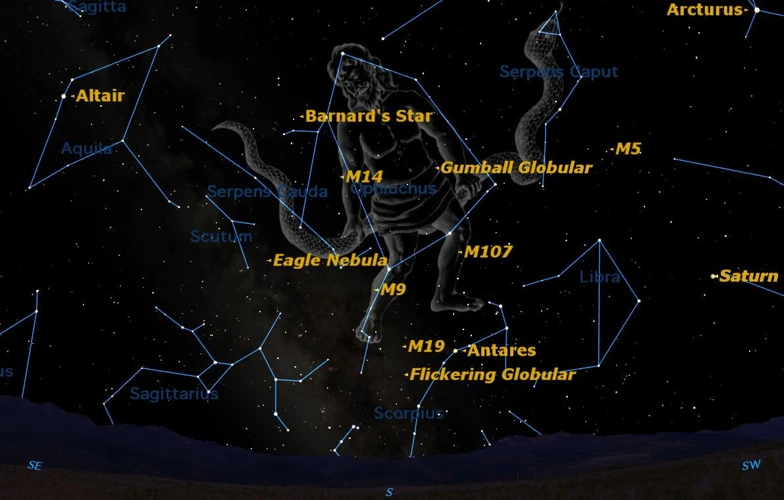
| The Birth of Perseus |
| Perseus, the legendary Greek hero, was born to a mortal woman named Danaë and Zeus, the king of the gods. Their union came about after Zeus fell in love with Danaë and took on the guise of a golden shower to impregnate her. This peculiar conception set the stage for the extraordinary destiny that awaited Perseus. The birth of Perseus was shrouded in secrecy, as Danaë’s father, King Acrisius, had received a prophecy that his grandson would someday overthrow him. In a desperate attempt to prevent this fate, King Acrisius locked Danaë and Perseus in a chest and cast them out to sea. Miraculously, they survived the treacherous journey and washed ashore on the island of Seriphos. |
| The Early Years of Perseus |
| Perseus and Danaë were taken in by the kind ruler of Seriphos, Dictys. As Perseus grew up on the island, he exhibited signs of remarkable strength and courage, traits that would later define him as a hero. Dictys raised Perseus as his own son and taught him the ways of the world. However, their peaceful existence was soon threatened by the island’s tyrannical ruler, Polydectes. Polydectes grew infatuated with Danaë and desired her as his queen. To rid himself of Perseus, Polydectes devised a plan to send Perseus on a seemingly impossible quest – to slay the monstrous Gorgon Medusa and bring back her head. Oblivious to the dangers that lay ahead, Perseus embarked on this perilous journey, fueled by his determination to protect his mother and prove his worth. |
A Clash of Gods: The Adventures of Perseus’ Parents
| The Love Story of Danaë and Zeus |
| The tale of Perseus begins with a clash of gods – the romantic entanglement between Danaë and Zeus, the ruler of Mount Olympus. Danaë was a mortal princess known for her beauty, while Zeus was renowned for his insatiable desires. One day, Zeus caught sight of Danaë and was instantly smitten by her radiance. Unable to resist his affections, Zeus transformed himself into a shower of golden rain and descended upon Danaë, impregnating her with his divine seed. This divine union brought forth Perseus, a child destined to be both god and hero. |
| The Perils Faced by Danaë |
| Danaë’s love affair with Zeus did not come without consequences. When her father, King Acrisius, learned of her pregnancy, he grew furious and resentful. Seeking to avoid the prophecy that foretold his overthrow by his own grandson, King Acrisius devised a plan to eliminate Danaë and her unborn child. He confined them in a wooden chest and cast them out into the sea, hoping that they would perish in the vastness of the waters. However, the will of the gods proved stronger than King Acrisius’ intentions, and they miraculously survived their harrowing journey. |
| The Providential Escape and Arrival |
| Guided by the hands of fate, the chest bearing Danaë and Perseus washed ashore on the island of Seriphos. Dictys, the benevolent ruler of the island, discovered them and took them in, offering them refuge from their tumultuous past. In this foreign land, Danaë and Perseus found solace and a chance at a new life. Their arrival on Seriphos marked the beginning of Perseus’ journey, one that would lead him to become a celebrated hero and fulfill his destined role in the ancient world. |
The Prophecy and Perilous Journey
| The Prophecy |
| Prior to the perilous journey that awaited Perseus, a prophecy loomed over his life. It was foretold that the heroic son of Danaë would bring about the downfall of King Acrisius, Perseus’ grandfather. Determined to avoid this fate, King Acrisius took drastic measures to ensure his own safety. Little did he know that his attempts to control destiny would set in motion a chain of events that would shape the destiny of his grandson. |
| The Perilous Journey Begins |
| Undeterred by the dangerous task given to him by Polydectes, Perseus set off on a perilous journey to defeat Medusa. Equipped with divine artifacts, including a mirrored shield from Athena, Hermes’ winged shoes, and a cap of invisibility from Hades, Perseus ventured into the treacherous lair of the Gorgon. Along the way, he encountered various challenges and monsters, but his courage and resourcefulness propelled him forward. |
| The Gorgon Medusa |
| Medusa, one of the three Gorgon sisters with snakes for hair, was hideous to behold. Her gaze could turn anyone who looked into her eyes into stone. To overcome this formidable adversary, Perseus used the mirrored shield to avoid direct eye contact and severed Medusa’s head with a single stroke of his sword. The decapitation of Medusa proved to be a monumental achievement, as it would play a pivotal role in later events. |
| The Return and Confrontation |
| Having successfully slain Medusa, Perseus embarked on the journey back to Seriphos, carrying the severed head as proof of his triumph. On his way, he faced numerous challenges, including the aggressive sea monster, Cetus, and the temptations of the Gorgons’ sisters, the Graeae. Perseus emerged victorious from these encounters, showcasing his bravery and cunning. Finally, armed with Medusa’s head, he returned to Seriphos to confront the treacherous Polydectes and fulfill his mission. |
The Gorgon Medusa and the Winged Shoes of Hermes
| The Gorgon Medusa |
| The monstrous Gorgon Medusa, with snakes for hair and a gaze that turned those who looked upon her into stone, posed a formidable challenge for Perseus. However, armed with divine aid, he ventured forth, determined to slay the fearsome creature. Perseus sought out the gray sisters, three elderly women who shared a single eye between them. Using his wits, he tricked them into revealing the location of the nymphs who possessed vital information on how to defeat Medusa. Guided by Hermes, the messenger of the gods, Perseus managed to procure the necessary tools for his dangerous mission. |
| The Winged Shoes of Hermes |
| Among the gifts bestowed upon Perseus by the gods was a pair of winged sandals crafted by Hermes. These magical shoes granted him incredible speed and agility, enabling him to navigate the treacherous paths leading to the lair of the Gorgons. With his newfound footwear, Perseus soared through the air, evading danger and traversing great distances in his quest to face Medusa. The winged shoes not only facilitated his physical prowess but also symbolized the divine assistance provided by Hermes, a crucial aspect of Perseus’ success. |
The Heroic Feats of Perseus
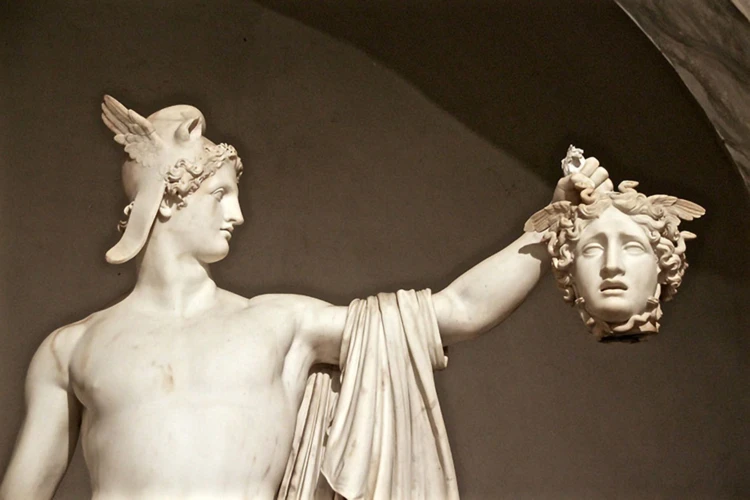
| Defeat of Medusa and Rescue of Andromeda |
|
Armed with the wisdom and guidance of the gods, Perseus embarked on his epic quest to vanquish the fearsome Gorgon Medusa. Equipped with a mirrored shield to avoid Medusa’s deadly gaze and the winged shoes of Hermes for swift mobility, Perseus ventured into the treacherous lair of the Gorgon. With unyielding determination, he successfully beheaded Medusa, turning her into a hideous creature whose gaze could turn anyone to stone. The decapitation of Medusa marked a significant triumph for Perseus, but his journey was far from over.
Continuing on his path, Perseus stumbled upon the beautiful princess Andromeda, who was in great distress. Andromeda had been chained to a rock by the sea as a sacrifice to appease the wrath of Poseidon. Perseus, driven by his sense of justice and compassion, slew the sea monster that threatened Andromeda and freed her from her perilous predicament. This act of heroism not only saved Andromeda but also won her heart. Perseus and Andromeda soon married and their union became a symbol of resilience and love in the face of adversity. |
| Encounters with Pegasus and the Graeae Sisters |
|
Along his adventurous journey, Perseus encountered a variety of mythical creatures and figures. One such encounter was with Pegasus, the majestic winged horse. Pegasus, born from the blood of Medusa after her beheading, became Perseus’s loyal companion, carrying him through the skies and aiding him in his heroic endeavors. Together, they formed an indomitable team, their bond a testament to the power of friendship and trust.
Perseus also came face to face with the Graeae Sisters, three ancient hags who shared a single eye and tooth among them. These mysterious beings possessed valuable information about the location of the nymphs, who guarded the crucial tools Perseus needed for his quest. With cunning and resourcefulness, Perseus tricked the Graeae Sisters into revealing the location of the nymphs, ensuring his success in obtaining the helmet of invisibility, the winged sandals, and the adamantine sickle. |
| The Return and Final Triumph |
| After a series of arduous challenges, Perseus returned to Seriphos, prepared to confront Polydectes and free his mother from his clutches. Using Medusa’s head as a weapon, he transformed Polydectes and his followers into stone, exacting his revenge while ridding the island of its tyrant. Perseus, having completed his heroic feats, embarked on a final journey, returning the winged sandals, the helmet of invisibility, and the sickle to the nymphs who guarded them. This act of gratitude and respect for the divine gifts bestowed upon him solidified Perseus’s status as a true hero. |
The Defeat of Medusa and the Rescue of Andromeda
- The Quest for Medusa: Armed with the wisdom of the gods and magical gifts bestowed upon him, Perseus set out on his daring quest to defeat Medusa and claim her head. With the guidance of the goddess Athena and the winged shoes of Hermes, Perseus braved treacherous lands and perilous creatures to reach the lair of the monstrous Gorgon. Medusa, with her snakes for hair and the power to turn anyone who looked upon her to stone, was a formidable adversary. But Perseus, using a polished shield to avoid direct eye contact, decapitated Medusa with a swift stroke of his magical sword. The importance of Medusa’s head would later reveal itself in unexpected ways.
- The Rescue of Andromeda: With Medusa’s head in his possession, Perseus embarked on another heroic feat – the rescue of Andromeda, a beautiful princess who had been chained to a rock as a sacrifice to a sea monster. Andromeda’s mother, Queen Cassiopeia, had boasted about her daughter’s beauty, angering the gods and leading to this perilous situation. Perseus, drawn by Andromeda’s plight, used Medusa’s head as a powerful weapon. He turned the sea monster to stone, saving Andromeda from her impending doom. The rescue of Andromeda not only showcased Perseus’ bravery but also demonstrated his ability to overcome seemingly insurmountable challenges and protect the innocent. It was a testament to his heroism and his role as a defender of the weak and oppressed.
Encounters with Pegasus and the Graeae Sisters
| Pegasus, the Majestic Winged Horse |
| During his quest to slay Medusa, Perseus encountered the magnificent Pegasus, a winged horse of divine origin. Pegasus, born from the blood of the slain Medusa, possessed incredible speed and the ability to fly. Recognizing the potential of this mythical creature, Perseus managed to tame Pegasus and form a strong bond with the majestic horse. Mounted on Pegasus’ back, Perseus soared through the skies, gaining an advantage in his quest and showcasing the power that comes from embracing allies in challenging times. This partnership between Perseus and Pegasus symbolizes the importance of teamwork and the benefits of joining forces to overcome obstacles. |
| The Perilous Encounter with the Graeae Sisters |
| On his journey, Perseus faced another formidable challenge, encountering the Graeae Sisters – three ancient hags who shared a single eye and a single tooth among them. This trio of sisters possessed great knowledge and power, making them crucial to Perseus’ quest. Using his cunning, Perseus managed to outwit the Graeae Sisters by snatching their shared eye and tooth and bargaining with them for information on how to find the elusive nymphs known as the Hesperides. The Graeae Sisters serve as a reminder that even the most daunting adversaries can be overcome through strategic thinking and resourcefulness. They highlight the importance of adaptability and cleverness in the face of adversity. |
The Return and Final Triumph
| The Return Home |
| After a series of arduous trials and encounters with mythical creatures, Perseus successfully defeated Medusa and obtained her severed head. As he began his journey back to Seriphos, he encountered several obstacles along the way. One such challenge came in the form of the Titan Atlas, who attempted to turn Perseus away. Using the head of Medusa as a weapon, Perseus turned Atlas into stone and continued his journey. |
| Final Triumph and Confrontation |
| Upon his return to Seriphos, Perseus discovered that Polydectes had been tormenting his mother in his absence. Filled with righteous anger, Perseus sought vengeance against the tyrant. Using the powers bestowed upon him by the gods, Perseus wielded the head of Medusa and turned Polydectes and his followers to stone. With the oppressive ruler dealt with, Perseus reunited with his mother and Dictys, who revealed that Danaë had married him during Perseus’ quest. |
| The Prophecy Comes Full Circle |
| As fate would have it, Perseus’ final triumph also fulfilled the prophecy that once foretold his grandfather’s downfall. Eventually, news of Perseus’ heroic deeds reached King Acrisius, who had fled to the city of Larissa to escape his supposed fate. Seeking to avoid confrontation with his grandson, King Acrisius attended a sporting event in the city. However, during a discus-throwing competition, Perseus unintentionally hit his grandfather with a stray discus, fulfilling the prophecy and causing Acrisius’ demise. |
The Symbolism and Meaning Behind Perseus’ Myth
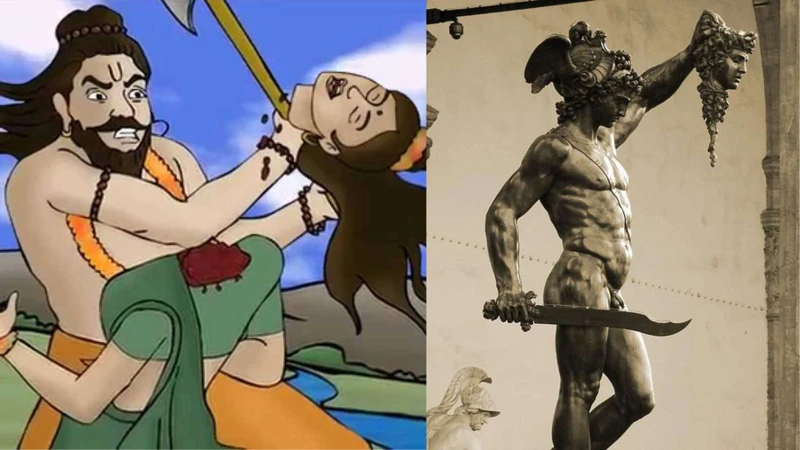
| The Archetypal Hero’s Journey in Perseus’ Quest |
| The myth of Perseus embodies the classic archetype of the hero’s journey, a recurring pattern found in myths and stories across cultures. Perseus’ quest to slay the Gorgon Medusa and rescue Andromeda follows this pattern, starting with a call to adventure, a perilous journey, and a triumphant return. Perseus, like many heroes, faces a series of tests and challenges that ultimately lead to personal growth and transformation. His quest also highlights the theme of overcoming adversity and facing one’s fears, as Medusa represents the embodiment of terror and danger. Perseus’ journey serves as an allegory for the trials and triumphs one must endure on the path to self-discovery and fulfillment. |
| Perseus as a Cultural Hero and Symbol of Bravery |
| Perseus holds significant cultural symbolism as a hero known for his bravery and resourcefulness. His victory over the monstrous Medusa is seen as a metaphor for the triumph of good over evil. Perseus’ story often serves as inspiration for individuals facing difficult challenges or embarking on their own quests. His ability to navigate treacherous situations and overcome seemingly insurmountable obstacles shows that with determination and courage, anyone can achieve greatness. Perseus exemplifies the qualities of a true hero and serves as a reminder of the human capacity for bravery and heroism in the face of adversity. |
| Perseus’ Connection to Other Northern Heroes and Myths |
| Perseus, as a northern hero, shares connections and similarities with other mythological figures from the same region. In Norse mythology, for example, the hero Sigurd slays the dragon Fafnir and rescues the maiden Brynhild, paralleling Perseus’ defeat of Medusa and his rescue of Andromeda. These shared themes and motifs among the myths of northern cultures suggest a common human fascination with tales of heroism, adventure, and the triumph of good over evil. Perseus’ story bridges the gap between different mythologies and demonstrates the universal appeal of heroic narratives. |
The Archetypal Hero’s Journey in Perseus’ Quest
The journey of Perseus in his quest to defeat the Gorgon Medusa encompasses the classic elements of the archetypal hero’s journey. Perseus begins as an ordinary individual, thrust into an extraordinary circumstance that calls him to embark on a perilous adventure. This first stage, known as the Call to Adventure, propels Perseus into the unknown and sets him on the path of self-discovery and transformation. Armed with special tools and guidance from the gods, Perseus represents the hero archetype as he faces numerous trials and obstacles. These obstacles include encounters with mythical and monstrous creatures such as the Graeae Sisters, who share a single eye, and the fearsome sea creature, Cetus, who holds Princess Andromeda captive. Along his journey, Perseus receives divine aid in the form of gifts from the gods, including a reflective shield from Athena, which aids him in his final battle against Medusa. Perseus also experiences a symbolic death and rebirth during his encounter with Medusa, facing his fears head-on and coming out transformed. Perseus’ return and triumphant rescue of Andromeda complete the stages of the hero’s journey, fulfilling his ultimate quest. This mythic narrative of Perseus serves as a timeless example of the hero’s journey, resonating with audiences across different cultures and times.
Perseus as a Cultural Hero and Symbol of Bravery
| Perseus as a Cultural Hero |
| Perseus, with his daring exploits and triumph over formidable foes, has emerged as a cultural hero in Greek mythology. His story has served as a source of inspiration and admiration for countless generations, highlighting the qualities of bravery, resilience, and resourcefulness. Perseus’ courage in facing the fearsome Gorgon Medusa, a creature whose gaze turned mortals to stone, symbolizes the triumph of good over evil and the power of heroism to overcome seemingly insurmountable challenges. His journey from an ordinary mortal to a legendary hero resonates with individuals across cultures, reminding them of their own capacity for greatness. |
| Perseus as a Symbol of Bravery |
| Perseus’ quest to slay Medusa and his subsequent heroic feats have positioned him as a symbol of bravery. As he faced numerous obstacles and deadly adversaries, Perseus demonstrated unwavering courage and a willingness to confront danger head-on. His ability to think creatively and employ strategic thinking in the face of adversity showcases the importance of intelligence and bravery working together. Perseus’ story serves as a reminder that bravery extends beyond physical strength, encompassing mental fortitude and the willingness to take risks for the greater good. His example encourages individuals to embrace their own courage and confront the challenges they encounter in life with determination and resilience. |
Perseus’ Connection to Other Northern Heroes and Myths
Perseus, the heroic figure from ancient Greek mythology, shares connections with other renowned heroes and myths of the northern lands. One prominent connection is to the myth of Beowulf, an epic tale from Norse and Anglo-Saxon literature. Both Perseus and Beowulf embody the archetype of the hero who ventures on quests to slay monstrous opponents. Their tales showcase their exceptional strength and bravery, as they face formidable challenges to protect their people and gain honor. Additionally, Perseus’ encounter with the Graeae Sisters, who share one eye among them, bears a striking resemblance to the Fates in Norse mythology, known as the Norns. These female beings also control the destinies of mortals and share a unified vision. These connections demonstrate the underlying themes of heroism and destiny that permeate the myths of the northern lands.
The Influence of Perseus in Art, Literature, and Pop Culture
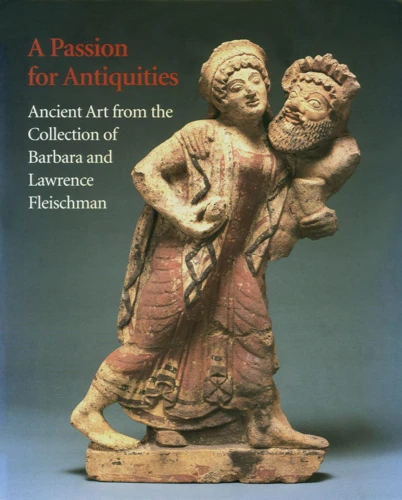
Throughout history, the captivating tale of Perseus has left an indelible mark on art, literature, and pop culture. One of the most iconic images associated with Perseus is his triumphant moment after slaying the Gorgon Medusa. This scene has been depicted in countless sculptures, paintings, and even on ancient Greek pottery. One particularly famous sculpture is Cellini’s 16th-century masterpiece, “Perseus with the Head of Medusa,” which showcases Perseus holding Medusa’s severed head aloft.
In addition to visual art, Perseus has also played a prominent role in literature. The ancient Greek poet Hesiod mentioned Perseus in his seminal work, “Theogony,” where he detailed the genealogy of the gods. Perseus has also been a central character in a number of Greek tragedies, most notably Aeschylus’ “Prometheus Bound,” where he appears as a rescuer of Prometheus.
In modern times, Perseus continues to captivate audiences through various forms of entertainment. Films like “Clash of the Titans” and “Percy Jackson & the Olympians” have brought Perseus’ story to the big screen, introducing new generations to his heroic exploits. Additionally, Perseus has inspired numerous video games, comic books, and even songs.
It is evident that the influence of Perseus extends far beyond his ancient origins. His story continues to be retold and reimagined, captivating audiences with its themes of heroism, adventure, and divine intervention. Perseus’ enduring presence in art, literature, and popular culture serves as a testament to the timeless allure of this ancient northern hero.
The Iconic Image of Perseus Holding Medusa’s Head
| The Artistic Depiction of Perseus Holding Medusa’s Head |
| One of the most iconic images associated with Perseus is that of him holding the severed head of Medusa. This striking visual representation has been immortalized in various forms of art throughout history. The artistic portrayal typically shows Perseus with a triumphant expression, his face unflinching as he wields the decapitated head of the dreaded Gorgon. The sight of Medusa’s serpentine locks and petrifying gaze turned to stone conveys the triumph of good over evil, bravery over fear. Artists have taken creative liberties with this portrayal, often depicting Perseus adorned in his winged shoes and carrying his trusty shield, a symbol of protection against the gaze of Medusa. The image captures the climactic moment of Perseus’ heroic feat, freezing it in time for audiences to marvel at his courage and resourcefulness. |
| The Symbolism behind the Image |
| The iconic image of Perseus holding Medusa’s head carries deep symbolism and layers of meaning. On a surface level, it represents the hero’s successful slaying of a monstrous adversary, a powerful image of victory and conquest. In a broader context, the image serves as a reminder of the triumph of virtue and bravery over darkness and chaos. Medusa herself is often interpreted as a symbol of chaos and malevolence, and Perseus’ act of vanquishing her reflects the triumph of order and righteousness. Medusa’s petrifying gaze, which turned those who met her eyes into stone, can be seen as a metaphor for the paralyzing effects of fear. Perseus demonstrates his ability to confront his deepest fears and emerge victorious, inspiring audiences to confront and overcome their own fears in the face of adversity. |
| The Enduring Legacy in Art and Culture |
| The image of Perseus holding Medusa’s head has left an indelible mark on the artistic and cultural landscape. It has been depicted in various art forms, including sculptures, paintings, and even in contemporary media. For instance, the famous sculptural masterpiece by Benvenuto Cellini, known as “Perseus with the Head of Medusa,” showcases the hero in a dynamic pose, illustrating his heroic feat. This image has also permeated literature, inspiring countless authors to incorporate Perseus into their stories or draw upon the symbolism of his triumph. The enduring popularity of Perseus’ image speaks to its timeless appeal and universal significance, as it continues to captivate audiences across generations and serve as a visual representation of courage, resilience, and the human capacity for overcoming adversity. |
Perseus in Ancient Greek Literature and Tragedies
Ancient Greek literature and tragedies have immortalized the heroic exploits of Perseus, making him a prominent figure in their storytelling tradition. One of the most well-known literary works featuring Perseus is Ovid’s “Metamorphoses.” In this epic poem, Ovid recounts the myth of Perseus’ quest to slay Medusa, his heroic encounters, and his ultimate triumph. Perseus’ story also finds its way into the plays of tragedians like Aeschylus and Euripides. For instance, Aeschylus’ “Prometheus Bound” mentions Perseus as the ancestor of the play’s protagonist, Prometheus. Additionally, Euripides’ tragedy “Andromeda” focuses on the rescue of Andromeda by Perseus. These ancient works not only solidify Perseus’ status as a legendary hero but also shed light on the cultural significance and continued fascination with his myth. The influence of these literary works extends beyond ancient Greece, inspiring subsequent generations of writers and artists to explore and reinterpret the enduring tale of Perseus.
Perseus’ Legacy in Modern Entertainment and Pop Culture
- Film and Television: Perseus has left an indelible mark on modern entertainment, particularly in film and television. One of the most notable adaptations of Perseus’ story is the 1981 film “Clash of the Titans,” which brought the hero’s myth to life with groundbreaking visual effects. This film was followed by a 2010 remake of the same name. Perseus has also made appearances in popular television shows such as “Xena: Warrior Princess” and “Hercules: The Legendary Journeys,” further solidifying his place in modern pop culture.
- Literature and Comics: Perseus’ legacy extends to the realm of literature and comics. Numerous novels and retellings of his myth have been published, captivating readers with his heroic exploits. Additionally, Perseus has made appearances in well-known comic book series such as Marvel’s “Thor” and DC Comics’ “Wonder Woman,” often crossing paths with other mythological and superhero characters.
- Video Games: The influence of Perseus can also be seen in the world of video games. Games like “God of War” feature Perseus as a prominent character, allowing players to step into his shoes and experience his mythological adventures firsthand. These immersive gaming experiences have introduced a new generation to the epic tale of Perseus and further cemented his place in modern pop culture.
- Art and Sculpture: Perseus’ image has been immortalized in various forms of artwork throughout history. The most iconic depiction is that of Perseus holding the severed head of Medusa, a symbol of his triumph over evil. This image has inspired countless sculptures, paintings, and other works of art, showcasing the enduring fascination with Perseus’ story and its visual representation.
The Enduring Fascination with Perseus: Unraveling the Enigma
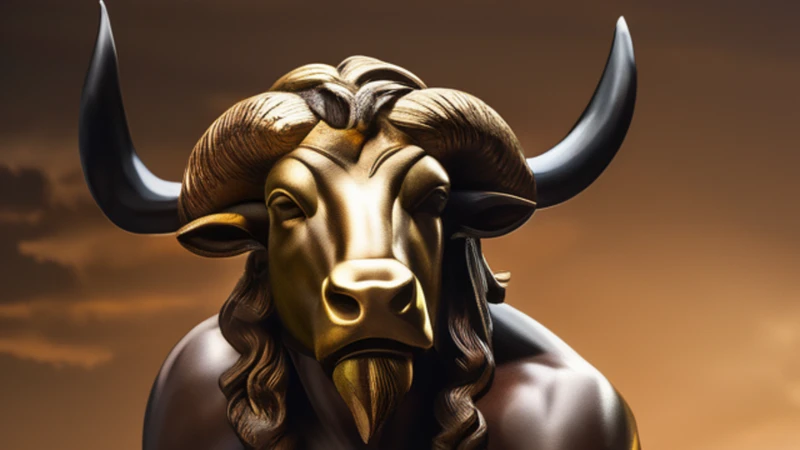
| The Continued Study and Interpretation of Perseus’ Myth |
| Perseus’ myth has endured for centuries, captivating the minds of scholars, historians, and mythologists. The enigmatic nature of Perseus and his heroic exploits continue to be subjects of intense study and interpretation. Academic experts pore over ancient texts, archaeological findings, and comparative mythological analysis to unravel the intricate layers of Perseus’ story. Each generation brings forth new perspectives and theories, shedding light on different aspects of his myth and its symbolic significance. Through ongoing research, scholars strive to uncover the deeper meaning behind Perseus’ journey and its relevance to human existence. |
| The Cultural Significance of Perseus in the Modern World |
| Perseus’ enduring fascination extends far beyond academic circles. His myth has permeated popular culture, influencing various aspects of modern society. Perseus represents the timeless archetype of the hero, embodying qualities such as bravery, perseverance, and selflessness. His story serves as a moral compass, inspiring individuals to face their own challenges with courage and determination. In art, literature, and even advertising, Perseus often serves as a symbol of triumph over adversity, reminding us of the human capacity for greatness and the importance of staying true to one’s values. His tale resonates with audiences worldwide, bridging the gap between ancient mythology and contemporary life. |
The Continual Study and Interpretation of Perseus’ Myth
Throughout history, the myth of Perseus has continued to captivate scholars, researchers, and enthusiasts alike, leading to a continual study and interpretation of his story. The multifaceted nature of Perseus’ myth has sparked numerous theories and discussions, delving into its symbolism and deeper meanings. Scholars have analyzed the archetypal hero’s journey depicted in Perseus’ quest, drawing parallels to Joseph Campbell’s monomyth and examining the psychological implications of the challenges he faced. The myth of Perseus has also been explored in relation to other northern heroes and myths, such as Beowulf and Sigurd, shedding light on their shared themes of bravery and heroism. These ongoing studies contribute to a deeper understanding and appreciation of Perseus’ myth, unraveling its layers of complexity and cultural significance. By examining the historical context, literary interpretations, and archaeological evidence, researchers continue to piece together the puzzle of Perseus’ myth, offering new insights and interpretations that keep this ancient tale alive in the modern world.
The Cultural Significance of Perseus in the Modern World
| Perseus in Literature and Art |
| The cultural significance of Perseus extends far beyond ancient mythology, as his story continues to inspire and captivate the modern world. Perseus’ heroic exploits have been immortalized in various forms of art and literature. In Greek literature, Perseus is a central character in the epic poem “Metamorphoses” by Ovid, which recounts his battles with creatures like Medusa and the rescue of Andromeda. Additionally, the playwright Euripides depicted Perseus’ adventures in his tragedy “Andromeda,” further highlighting the enduring allure of this mythological hero. Perseus’ imagery has also made its mark in art, most notably in the iconic sculpture “Perseus with the Head of Medusa” by Benvenuto Cellini, which portrays Perseus wielding Medusa’s severed head. This captivating image continues to be celebrated and replicated in various artistic mediums. |
| Perseus in Pop Culture and Entertainment |
| Perseus’ enduring fame can be seen in his presence in modern entertainment and popular culture. His myth has served as inspiration for numerous books, films, and video games. Notably, the 1981 film “Clash of the Titans,” and its 2010 remake, brought Perseus’ adventures to the big screen, introducing a new generation to his heroic journey. Perseus’ popularity has also extended to the realm of video games, with characters like Kratos from the “God of War” series drawing inspiration from the mythological hero. His symbolic imagery, particularly the iconic image of Perseus holding Medusa’s head, has become a recognizable motif in advertising, fashion, and other media, further solidifying his cultural significance in the modern world. |
| Perseus’ Representation of Heroic Traits |
| Perseus’ legend and portrayal in literature and art also highlight the cultural significance of his character as a symbol of bravery, determination, and heroism. As a heroic figure, Perseus embodies qualities that are admired and valued across cultures and time periods. His unwavering courage in the face of daunting challenges, his resourcefulness in overcoming obstacles, and his selflessness in rescuing others make him a timeless archetype of the hero’s journey. Perseus’ story serves as a reminder of the power of the human spirit to persevere and triumph over adversity, inspiring individuals to embrace their own inner hero and to face their own quests with bravery and resilience. |
| Perseus’ Connection to Other Northern Heroes and Myths |
Conclusion
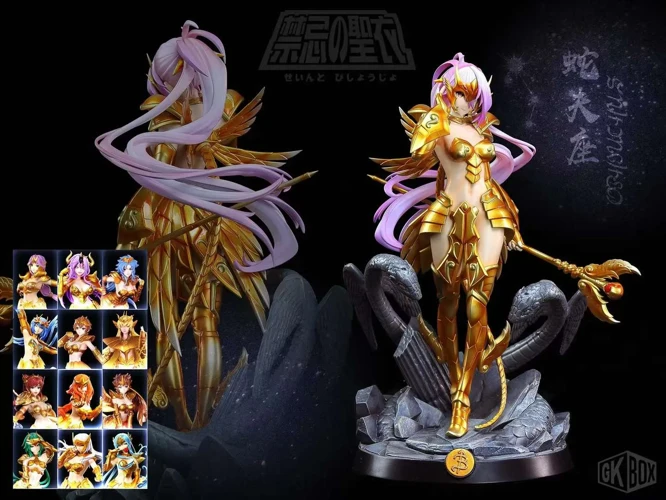
The captivating myth of Perseus, with its thrilling adventures and symbolic depth, continues to intrigue and inspire audiences to this day. Through examining the birth and early years of Perseus, we witness the extraordinary circumstances that shaped his heroic destiny. From the mysterious conception to surviving treacherous trials, Perseus overcame obstacles and proved himself as a brave and formidable hero. The story of Perseus not only offers an enthralling narrative but also carries profound symbolism, reflecting the archetypal hero’s journey and embodying the essence of bravery. The enduring fascination with Perseus is evident in its influence on art, literature, and popular culture throughout the ages. From ancient Greek tragedies to modern-day adaptations, Perseus’ story continues to captivate audiences and remind us of the timeless power of myth and the enduring relevance of this hero’s quest. The enigma of Perseus invites continual study and interpretation, challenging us to explore its deeper meanings and unravel the layers of its significance. As we delve into the mythological world of Perseus, we discover a cultural hero whose legacy resonates in the modern world. Whether through his iconic image or his appearance in literature and entertainment, Perseus continues to captivate our imagination and remind us of the timeless themes of bravery, heroism, and the indomitable human spirit.
Frequently Asked Questions

FAQs about the Birth and Early Years of Perseus
1. Who were the parents of Perseus?
Perseus was the son of Danaë, a mortal woman, and Zeus, the king of the gods.
2. How was Perseus conceived?
Zeus took on the form of a golden shower to impregnate Danaë, resulting in the birth of Perseus.
3. Why was Perseus placed in a chest and cast out to sea?
Perseus and his mother were cast out to sea to prevent a prophecy from coming true, which stated that Perseus would grow up to overthrow his grandfather, King Acrisius.
4. Who rescued Danaë and Perseus when they washed ashore?
They were taken in by Dictys, the ruler of the island of Seriphos, who showed them kindness and became Perseus’ adoptive father figure.
5. What special abilities did Perseus exhibit during his early years?
Perseus displayed remarkable strength and courage, traits that would later define him as a legendary hero.
6. Why did Polydectes want Perseus to slay Medusa?
Polydectes desired Danaë as his queen and saw Perseus as an obstacle. He hoped that by sending Perseus on a dangerous quest to kill Medusa, he would be rid of him.
7. What did Perseus hope to achieve by slaying Medusa?
Perseus embarked on the quest to protect his mother and prove his worth. Slaying Medusa and bringing back her head would demonstrate his bravery and heroism.
8. What island did Perseus grow up on?
Perseus grew up on the island of Seriphos, under the care of Dictys.
9. How did Perseus get the support he needed for his quest?
Perseus received divine aid from the gods Athena and Hermes, who provided him with a mirrored shield, a sickle, and the winged shoes of Hermes to aid him in his quest to defeat Medusa.
10. Did Perseus succeed in his quest to slay Medusa?
Yes, Perseus succeeded in killing Medusa and used her severed head as a weapon in future heroic endeavors.
References
Frequently Asked Questions

1. What is the origin of the myth of Perseus?
The myth of Perseus originates from ancient Greek mythology and has been passed down through generations in oral and written traditions.
2. Who were Perseus’ parents?
Perseus was the son of Zeus, the king of the gods, and Danae, a mortal princess.
3. How did Perseus acquire his famous winged shoes?
Perseus obtained his winged shoes, known as the Talaria, from Hermes, the messenger of the gods, as a gift to aid him in his quest.
4. What was the significance of Medusa’s head in Perseus’ journey?
Medusa’s head held the power to turn anyone who looked at it into stone. Perseus used Medusa’s head as a weapon to defeat his enemies and overcome various obstacles.
5. Who did Perseus rescue from the sea monster?
Perseus rescued the princess Andromeda from a sea monster sent by Poseidon as punishment for her mother’s pride and arrogance.
6. What were the Graeae Sisters known for in Greek mythology?
The Graeae Sisters were three sisters who shared one eye and one tooth among them. Perseus encountered them during his journey and used their eye to bargain for crucial information.
7. How did Perseus’ myth inspire other northern heroes?
Perseus’ myth served as a template for other northern heroes, such as Beowulf and Sigurd, who embarked on similar quests, battled monsters, and demonstrated bravery in the face of adversity.
8. What is the symbolism behind Perseus’ quest as an archetypal hero’s journey?
Perseus’ quest represents the archetypal hero’s journey, which entails facing challenges, discovering inner strength, and returning with newfound wisdom and transformative experiences.
9. How is Perseus depicted in ancient Greek literature and tragedies?
Perseus is often portrayed as a courageous and resourceful hero in ancient Greek literature and tragedies, where his myth serves as a source of inspiration and exploration of themes such as fate and destiny.
10. In what ways does Perseus’ legacy continue to influence modern entertainment and pop culture?
Perseus’ legacy is evident in various forms of modern entertainment and pop culture, where his myth continues to inspire and captivate audiences through books, movies, and even video games.
References
- PERSEUS – Argive Hero & King of Greek Mythology
- The Epic Story of Perseus Explained | Best Greek Mythology …
- Ancient Greek Heroes And Heroines







